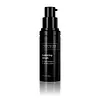What's inside
What's inside
 Key Ingredients
Key Ingredients

 Benefits
Benefits

 Concerns
Concerns

No concerns
 Ingredients Side-by-side
Ingredients Side-by-side

Water
Skin ConditioningGlycerin
HumectantBiosaccharide Gum-1
HumectantSodium Hyaluronate
HumectantPalmitoyl Tripeptide-5
Skin ConditioningChondrus Crispus Extract
Skin ConditioningGlyceryl Polyacrylate
Honey
HumectantHydrolyzed Hazelnut Protein
Skin ConditioningPunica Granatum Extract
AstringentTocopheryl Acetate
AntioxidantMacrocystis Pyrifera Extract
Skin ConditioningCitrullus Lanatus Fruit Extract
Skin ConditioningLens Esculenta Fruit Extract
Skin ConditioningPyrus Malus Fruit Extract
Skin ConditioningButylene Glycol
HumectantSodium Lactate
BufferingSodium PCA
HumectantPolysorbate 20
EmulsifyingLeuconostoc/Radish Root Ferment Filtrate
AntimicrobialEthylhexylglycerin
Skin ConditioningSodium Polyacrylate
AbsorbentPhenoxyethanol
PreservativeCitric Acid
BufferingWater, Glycerin, Biosaccharide Gum-1, Sodium Hyaluronate, Palmitoyl Tripeptide-5, Chondrus Crispus Extract, Glyceryl Polyacrylate, Honey, Hydrolyzed Hazelnut Protein, Punica Granatum Extract, Tocopheryl Acetate, Macrocystis Pyrifera Extract, Citrullus Lanatus Fruit Extract, Lens Esculenta Fruit Extract, Pyrus Malus Fruit Extract, Butylene Glycol, Sodium Lactate, Sodium PCA, Polysorbate 20, Leuconostoc/Radish Root Ferment Filtrate, Ethylhexylglycerin, Sodium Polyacrylate, Phenoxyethanol, Citric Acid
Water
Skin ConditioningDicaprylyl Carbonate
EmollientCetearyl Isononanoate
EmollientGlycerin
HumectantPentylene Glycol
Skin ConditioningCetearyl Alcohol
EmollientSteareth-20
CleansingSafflower Oil/Palm Oil Aminopropanediol Esters
Skin ConditioningLaminaria Digitata Extract
Skin ProtectingOpuntia Ficus-Indica Stem Extract
Skin ConditioningArabidopsis Thaliana Extract
AntioxidantMarrubium Vulgare Meristem Cell Culture
Skin ProtectingLeontopodium Alpinum Meristem Cell Culture
Skin ConditioningRetinyl Palmitate
Skin ConditioningTocopheryl Acetate
AntioxidantTocopherol
AntioxidantMicrococcus Lysate
Skin ConditioningCaprylyl Glycol
EmollientHexylene Glycol
EmulsifyingLactose
HumectantGalactoarabinan
Lecithin
EmollientSchizophyllan
HumectantBeta-Glucan
Skin Conditioning1,2-Hexanediol
Skin ConditioningCarbomer
Emulsion StabilisingCellulose
AbsorbentMaltodextrin
AbsorbentC14-22 Alcohols
Emulsion StabilisingCetearyl Glucoside
EmulsifyingC12-20 Alkyl Glucoside
EmulsifyingHydroxypropyl Methylcellulose
Emulsion StabilisingDisodium EDTA
Sodium Hydroxide
BufferingPhenoxyethanol
PreservativeEthylhexylglycerin
Skin ConditioningSodium Benzoate
MaskingParfum
MaskingCI 77007
Cosmetic ColorantLimonene
PerfumingWater, Dicaprylyl Carbonate, Cetearyl Isononanoate, Glycerin, Pentylene Glycol, Cetearyl Alcohol, Steareth-20, Safflower Oil/Palm Oil Aminopropanediol Esters, Laminaria Digitata Extract, Opuntia Ficus-Indica Stem Extract, Arabidopsis Thaliana Extract, Marrubium Vulgare Meristem Cell Culture, Leontopodium Alpinum Meristem Cell Culture, Retinyl Palmitate, Tocopheryl Acetate, Tocopherol, Micrococcus Lysate, Caprylyl Glycol, Hexylene Glycol, Lactose, Galactoarabinan, Lecithin, Schizophyllan, Beta-Glucan, 1,2-Hexanediol, Carbomer, Cellulose, Maltodextrin, C14-22 Alcohols, Cetearyl Glucoside, C12-20 Alkyl Glucoside, Hydroxypropyl Methylcellulose, Disodium EDTA, Sodium Hydroxide, Phenoxyethanol, Ethylhexylglycerin, Sodium Benzoate, Parfum, CI 77007, Limonene
 Reviews
Reviews

Ingredients Explained
These ingredients are found in both products.
Ingredients higher up in an ingredient list are typically present in a larger amount.
Ethylhexylglycerin (we can't pronounce this either) is commonly used as a preservative and skin softener. It is derived from glyceryl.
You might see Ethylhexylglycerin often paired with other preservatives such as phenoxyethanol. Ethylhexylglycerin has been found to increase the effectiveness of these other preservatives.
Glycerin is already naturally found in your skin. It helps moisturize and protect your skin.
A study from 2016 found glycerin to be more effective as a humectant than AHAs and hyaluronic acid.
As a humectant, it helps the skin stay hydrated by pulling moisture to your skin. The low molecular weight of glycerin allows it to pull moisture into the deeper layers of your skin.
Hydrated skin improves your skin barrier; Your skin barrier helps protect against irritants and bacteria.
Glycerin has also been found to have antimicrobial and antiviral properties. Due to these properties, glycerin is often used in wound and burn treatments.
In cosmetics, glycerin is usually derived from plants such as soybean or palm. However, it can also be sourced from animals, such as tallow or animal fat.
This ingredient is organic, colorless, odorless, and non-toxic.
Glycerin is the name for this ingredient in American English. British English uses Glycerol/Glycerine.
Learn more about GlycerinPhenoxyethanol is a preservative that has germicide, antimicrobial, and aromatic properties. Studies show that phenoxyethanol can prevent microbial growth. By itself, it has a scent that is similar to that of a rose.
It's often used in formulations along with Caprylyl Glycol to preserve the shelf life of products.
Tocopheryl Acetate is AKA Vitamin E. It is an antioxidant and protects your skin from free radicals. Free radicals damage the skin by breaking down collagen.
One study found using Tocopheryl Acetate with Vitamin C decreased the number of sunburned cells.
Tocopheryl Acetate is commonly found in both skincare and dietary supplements.
Learn more about Tocopheryl AcetateWater. It's the most common cosmetic ingredient of all. You'll usually see it at the top of ingredient lists, meaning that it makes up the largest part of the product.
So why is it so popular? Water most often acts as a solvent - this means that it helps dissolve other ingredients into the formulation.
You'll also recognize water as that liquid we all need to stay alive. If you see this, drink a glass of water. Stay hydrated!
Learn more about Water